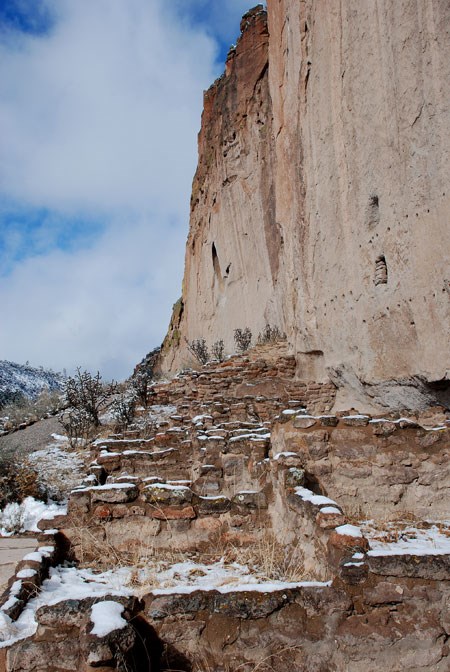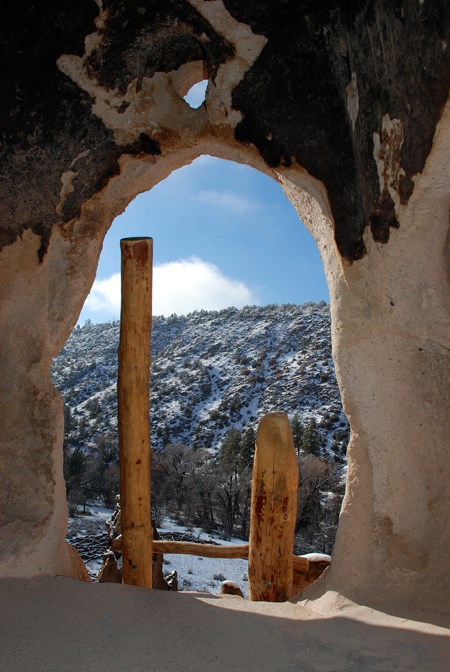
Photo by Sally King Who used to live here and where did they come from? What is the connection between Mesa Verde, Chaco Canyon, and Bandelier? Where did the people go? What language did the Ancestral Pueblo People of Frijoles Canyon speak? 
Photo by Sally King What is a cavate? What is the cause of the blackened ceilings in the cavates? What did the Ancestral Pueblo People use to build their living structures? Why are there dwellings on the canyon floor and along the cliff wall? How many rooms are there in Tyuonyi village? Why are the houses and rooms so small?
Where does the name Bandelier come from? Adolph Francis Bandelier was a Swiss-born scholar who grew up in Illinois and came to the Southwest at age forty to pursue a life-long dream of exploring the ancient sites of the Pueblo Indians. By mastering foreign languages easily, Bandelier communicated with the native peoples and in 1880 became the first to study and report on the dwelling sites in Frijoles Canyon. Along with scientific reports, he also published The Delight Makers, a fictionalized version of Pueblo life before the arrival of the Spanish. With the aid of more prominent archeologists, Bandelier illuminated the importance of preserving the heritage in Frijoles Canyon and was recognized by President Woodrow Wilson who established the area as a national monument and named it after him. Always the adventurer, Bandelier’s life ended in Spain; however his ashes were spread here in the canyon in 1980. |
Last updated: July 11, 2020
